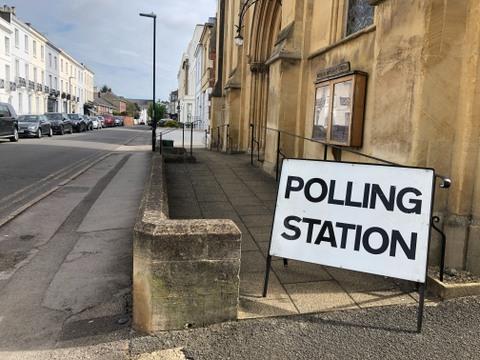
Return to the Election 2024 page
The following text was prepared by the IAMCR Election Committee.
IAMCR conducts elections every four years. For the 2024 elections, the timeline will be as follows:
- Call for nominations: 15 December 2023
- Nomination period: 15 December 2023 – 5 February 2024
- Nominees must have accepted: Monday, 5 February 2024
- Voting period: 1 April – 15 April 2024 (23:59 UTC)
The newly elected officers and members of the Executive Board and International Council will take their positions at the General Assembly in Christchurch. Elected positions are for four years and elected officers are permitted to be reelected one time.
IAMCR Governance
Given that IAMCR continues to be joined by new members, they may not be familiar with the IAMCR governance structure. In this letter we explain IAMCR’s structure and duties of its executive officers.
IAMCR’s governing bodies are the Executive Board, the International Council and the General Assembly. The Executive Board consists of the President, two Vice-Presidents, the Secretary General and the Treasurer. The International Council consists of 25 elected members, 15 section heads and 10 working group heads, and meets during the IAMCR conference. The International Council conducts business through periodic Zoom meetings as well as via email, and has online voting procedures. The General Assembly takes place every second year during IAMCR conferences. IAMCR consists of sections and working groups, which hold their own election, and these are not dealt with here. IAMCR has a number of committees whose members are mostly drawn from the International Council. IAMCR sections, working groups and committees report to the General Assembly as does the Executive Board. The Executive Board and International Council are supported by the Executive Secretariat, which is appointed.
The Executive Board
The Executive Board meets online every month, It meets face-to-face at the annual conference and some years holds an additional face-to-face meeting. Responsibilities are divided among the members. The responsibilities detailed below and how they are divided among the members of the EB are neither prescriptive nor exhaustive. Rather they reflect how the current EB shares the work and are subject to review and modification by the incoming EB.
President
The president:
- prepares and chairs the organisation’s formal meetings and is responsible for the organisational reform project.
- oversees the work of the Executive Board, which meets monthly online. A major task is the preparation of conferences, which involves meetings, negotiations and site visits.
- communicates with the International Council, committee and task force heads.
- co-writes and co-edits IAMCR governance documents and approves IAMCR statements that are recommended by the Clearing House for Public Statements.
- coordinates the Ambassador’s network, liaises with organizations IAMCR is affiliated to, such as UNESCO and represents IAMCR at conferences of other organizations.
- receives and answers a wide range of emails addressed to IAMCR.
Vice-Presidents (2)
The role of the Vice Presidents is to support the President. Currently, while one Vice President takes responsibility for IAMCR publishing and related activities, the other works closely with IAMCR’s sections and working groups, committees and task forces, in particular advancing the sections’ and working groups’ member engagement outside the annual conferences with, for example, IAMCR’s webinar series.
Secretary General
The main task of the Secretary General is the conference organization of IAMCR’s annual conferences, working on conference organization with the Local Organising Committee, IAMCR’s Executive Director and staff from the Executive Secretariat, and IAMCR’s Conference Organising Committee. The Secretary General also assists with organizing the Executive Board’s meetings and takes minutes.
Treasurer:
The treasurer:
- attends to IAMCR’s financial management.
- reports IAMCR’s financial position to the Executive Board at their monthly meetings.
- prepares an annual report for the International Council and bi-annual report for the General Assembly.
- administers IAMCR’s bank accounts, issues invoices and makes payments.
- manages grants and awards.
- develops strategies with regard to income and investments.
None of these positions carries a stipend, and the Executive Board members fund the necessary travel for site visits and conferences, with few exceptions, from their own institutional budgets. However, financial support may be available for IAMCR office holders (including EB and IC members) from LEI/MEI countries in the form of travel grants to assist with the costs associated with attending IAMCR annual conferences in support of their respective roles. Please contact the treasurer Elske van de Fliert at treasurer@iamcr.org to discuss if you are a prospective nominee.
The International Council (25 for election from membership at large)
Members of the International Council are expected to serve on an IAMCR committee or task force. Among these are the Environmental Impact committee; the Membership committee; the Publications committee and the committee for the Improvement of Academic Life. There are three task forces, the task force on Global Alliance on Media and Gender, the task force on Global Alliance for Social and Behavioural Change and the Disability and Accessibility Task Force.
The newly elected officers and members of the Executive Board and International Council will take their positions at the General Assembly in Christchurch. Elected positions are for four years and elected officers are permitted to be reelected one time.
We hope that this explanation of IAMCR’s governing structure helps you in the 2024 elections.
The IAMCR Election committee,
Beate Josephi (chair)
Robin Mansell and Eno Akpabio